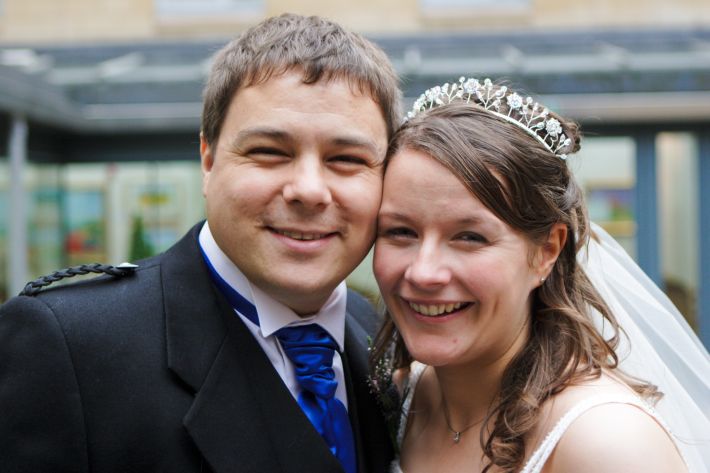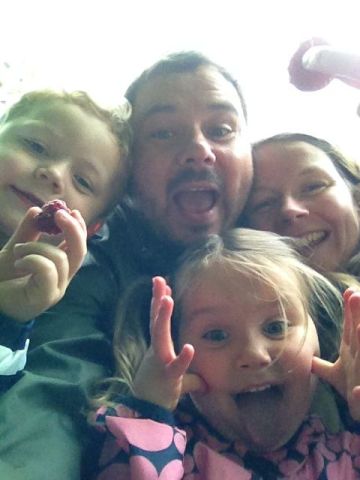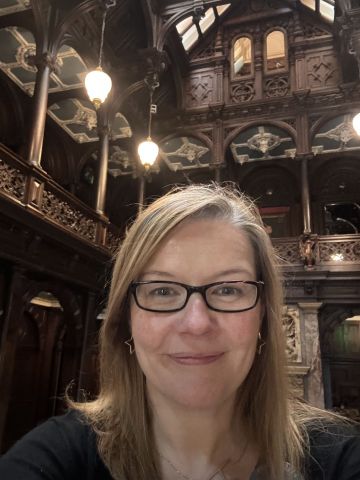Bridget Jones as a young widow: A WAY member’s review of Mad About the Boy
February 2025
“A raw and real but joyful depiction of grief, love, resilience and hope.” This is Scottish WAY member Alison Payne’s summary of the newly released Bridget Jones movie, which sees Bridget as a widow with two young children. We asked Alison to share her thoughts…
“This film, this story, has meant a lot to me. I was Bridget Jones. Through my teens, university years and into my twenties I was the permanent singleton in my group of normally coupled-up friends. I was the one with the disastrous love life who thought she would end up all alone. I was forever counting the calories, thinking all would be fine if only I could lose some weight (oh, to be that weight again!). But just like Bridget, once I learned to like myself ‘just the way I was’, I met my own Mark Darcy in Jude. We were married in 2006 and had two lovely children. I honestly couldn’t believe how lucky I was. And we lived happily ever after…

…for a while. In 2015, Jude was diagnosed with Non-Hodgkin Lymphoma and, despite an initial optimistic prognosis, on 21 November that year, when he was just 41 years old, he died.
At the grand old age of 36, I found myself going from the primary school playground, dropping off my 5 and 6 year olds, to the funeral directors to arrange my husband’s funeral. It was all very surreal. How could I be a widow at 36? Widows were supposed to be old. I might have had some grey hairs but we were supposed to be at the start of our journey together, not the end. I had lost my best friend, my partner, my co-parent –literally my other half. And in the midst of that loss, I also lost who I was – I was no longer half of that partnership, but neither was I the person I was before. Quite simply I was adrift.

In recent years there have been some honest, raw and messy depictions of bereavement and grief in the media through shows like And Just Like That, After Life or the return of Cold Feet. But Jude died in 2015, long before any of these aired. I remember even commenting in a support group about the fact that grief only ever seemed to be depicted in film and TV as a way to introduce a new romance. But there was one exception I knew of – Bridget Jones.
I had read Helen Fielding’s novel Bridget Jones: Mad About the Boy, which dealt with Bridget becoming a widow, when it came out in 2013. I loved it, as I did all the Bridget Jones books. It was sad, and emotional, and joyful, and funny. But I didn’t think any more about it until I found myself in Bridget’s shoes once again, and as weird as this may seem, it was oddly comforting. I couldn’t bring myself to re-read it after Jude died, but knowing that, as lost as I felt, I was there with Bridget, offered a little bit of reassurance.
As a result, when the making of the film was announced, I couldn’t wait to see it, and it did not disappoint. The film is a wonderful raw mix of love and grief; of loss and hope; and, ultimately, of Bridget finding herself once again.
I thought it was brilliant. I think Helen Fielding’s own experience of bereavement must have played a key part in how sensitively, and accurately, such complicated emotions were dealt with.
Finding a way forward
The film is set four years after Mark’s death. Bridget, played by actress Renée Zellweger, is trying to navigate raising their two young children, dealing with her grief and contemplating what is next for her – not just dating, but her career and life in general. Her grief and love for Mark are woven throughout all of this, irrespective of how much time has passed.
There are a number of different threads running through the movie.
There is the romance with 28-year-old Roxster, played by Leo Woodall from the recent Netflix remake of One Day. It is as funny as you would expect with any Bridget Jones romance, but also tender and helps rekindle a spark in Bridget.

There is the school, the parental politics and her son’s new science teacher, Mr Wallaker, played by Chiwetel Ejiofor, perhaps best known for his role in 12 Years a Slave. Mr Wallaker gets on the wrong side of Bridget early on after giving her son Billy a C, as opposed to his usual As, for a science project because he added heaven as a layer around the Earth’s atmosphere. This science vs faith discussion is a recurring one between the two with an argument played out in the classroom about whether a fruit fly has a soul, following a question prompted by Billy with the clear indication that he is thinking of his dad’s soul.
There is Bridget herself, trying to fit her own oxygen mask, as Emma Thompson’s scene-stealing Dr Rawlings keeps reminding her. This sees Bridget return to work and begin to find herself again. Not just a grieving widow, or a mother, but figuring out once again who she is.
And of course there is Daniel Cleaver. The return of Hugh Grant’s character, Bridget’s old flame, is brilliant – the touchingly wonderful scenes between him and Bridget are a joy to behold.
“You live in grief and then you live with it”
Throughout the film there is the usual relatable sense of Bridget’s struggles and self-doubt. She is surrounded and supported by her group of wonderful friends and colleagues, all characters that we have grown to love over the previous three films.
Ultimately, I left the cinema feeling uplifted.

Everyone’s experience of grief is different and for some who are widowed, the film may be too real, or they may be too early in their grief to consider going to see it. But for me, every tear that I shed, and there were plenty, was also a reminder of the love that I had for Jude.
As Bridget expresses, moving on isn’t about leaving something behind, rather it is about how that pain and grief can co-exist with joy and hope. When Jude died, a wise person said to me that you live in grief and then you live with it. I think this film highlights that transition beautifully and is all the more wonderful for it.”

Your donations are always welcome.
Donate